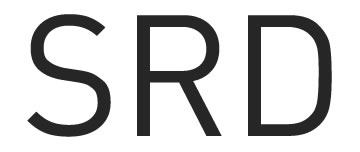
Industrial Design | Product Design | Transport Design
Industrial Design | Product | Transport Design
The differentiator
There is one special thing that sets apart Industrial Design from other design disciplines, that it so quickly conveys to the audience, consumer or other designers the value and legitimate benefits of sustainability in practice. When the quality of finish, design, idea and execution come together there can be no doubt that responsible design is a tangible and achievable, a thing highly worthy of pursuit.
The methods
Practical strategies includes rethinking materials, life cycles, efficiencies of energy use from cradle to use to grave for the raw materials, to the manufacture, the product use and it’s recyclability, capacity for re-use or disassembly and when all else fails it’s appropriate disposal. Through all of these phases there has been great study and progress inviting the modern designer to combine as many that will fit the brief (or get the brief changed!) Also see ideas.
Responsible Design Strategies
Whole Systems and Lifecycle Thinking
Consider all the inputs plus the whole process for you design or product. There’s two main parts to this to consider all the lifecycles aspects plus the entire collection of activities that create the end result. How may we best address them all for maximum return?
Big picture thinking helps you see the entire social, environmental, and technical systems that any product is a part of. Addressing this early can help you devise new ways to innovate.
Lifecycle thinking allows you to quantify environmental impacts so that you can prioritize, set metrics around, and most effectively reduce them. This process is not just about making things “less bad.” It can help unlock your creativity and lead to game-changing innovations Throughout the design process, there are many sustainable design tools and strategies you can draw from Videos: Autodesk Sustainability Workshop and their Simulation for Sustainable Designapps.
Material selection thinking is universal across all fields and can make significant impacts on reducing greenhouse gas emissions and affect many environmental perspectives…
Life Cycle Strategies Every product goes through a series of stages, know as its life cycle. These stages generally include material extraction, manufacture of product, packaging and distribution, product use, and disposal of the product. By designing for adaptability and extended use, disassembly, recyclability, and standardisation of components, designers can minimise impact on the built environment.
Ecologically Sustainable Development plan in Au. (good data, too little action) Know of other, better resources? Do share your insights for industry large & small.
the circular economy from a product perspective, explores applying a systemic approach and transition theory. Drivers of product design and usage are discussed in the context of emerging consumption trends and business models. For governance to be effective, it has to address the product life-cycle and the societal context determining it. Indicators and assessment tools are proposed that can help fill the current data and knowledge gaps. EU Web article : Download 7.8mb
Circularity Calculator confirms many #ResponsibleDesign ideals
Well developed tool from the EU to calculate How circular is your product? And how circular they can be. The Circularity Calculator helps you to measure, communicate and improve the circularity of your products. Which way is circular? Most products require a redesign to be viable in a circular economy. For instance design for disassembly, recyclability, long-lived components. The process also confirms which circular strategies pay off Going circular – is it worth it? In a circular economy, manufacturers recover used products, components and materials, to reuse them for new products. This recovery and reuse decreases the need for raw materials. When done right, circularity represents a significant business opportunity, capturing the value embedded in used products. Key performance indicators for improving circularity across product generations. Made for the design process. Developed by, with and for designers working on circular products. An intuitive and visual way to grasp circularity, showing the flows of reuse, remanufacture and recycling. With a point-and-click dashboard, there is minimal learning curve. Advanced users have several more options. Endorsed by the EllenMacArthur foundation. www.ideal-co.nl/tools.html 4 Licence levels including FREE circularitycalculator.com
Global Opportunity Explorer Sustainia
Browse a wealth of Transport, Industrial Design and related ideas and opportunities that address UN SDGs and a host of pressing issues. Global relevance. sustainiaworld.com/insights/
Rocky Mountain Institute, USA on Sustainable Transportation
Tokyo 2020 Game Medals to Be Produced Using Urban Mine
The Tokyo Organizing Committee of the Olympic and Paralympic Games announced recently the launch of a citizen-participatory project “Tokyo 2020 Medal Project–Making medals using urban mines”. The project aims to make medals for the 2020 Games using gold, silver and copper metals recycled from discarded electronic devices, including mobile phones and small household appliances. Story from JfS, Japan for Sustainability. (a good example of rethinking materials-ed)




